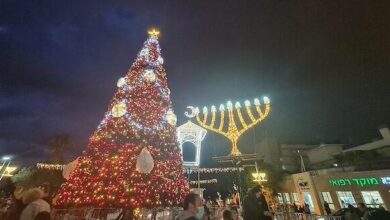The search for the Ark of the Covenant has led to renewed speculation that the biblical artifact may be hidden inside a church in Ethiopia, but historians have pushed back against the theory.
Archaeologists have searched for centuries for clues and hints of where the Ark, containing the stone tablets bearing the Ten Commandments given to Moses by God, could be.
The BASE Institute has sent research teams to Ethiopia, Egypt, Israel and Rome and it believes the evidence points to Ethiopia.
 Although it has not found the actual Ark, it stated, “As unusual as this may sound, the BASE team has uncovered compelling evidence that the Ark may well have been spirited up the Nile River to an eventual resting place in the remote highlands of ancient Kush–modern-day Ethiopia.”
Although it has not found the actual Ark, it stated, “As unusual as this may sound, the BASE team has uncovered compelling evidence that the Ark may well have been spirited up the Nile River to an eventual resting place in the remote highlands of ancient Kush–modern-day Ethiopia.”
Some claim that the artifact lies specifically inside the Church of Our Lady Mary of Zion in Aksum, Ethiopia.
Monks serving as guardians do not allow historians and archaeologists to come investigate. The chapel is said to be “off-limits to all but a few members of the Ethiopian Christian church hierarchy, hindering any independent confirmation of their authenticity.”
Fueling the speculation are old accounts by late British scholar and historian Edward Ullendorff, who claimed to have seen the Ark inside during World War II.
Live Science spoke last week with Tudor Parfitt, who was also a professor at the University of London’s School of Oriental and African Studies, and heard Ullendorff’s claim firsthand.
Parfitt, now a professor of religion at Florida International University, clarified that what Ullendorff saw in 1941, when he was a British army officer leading forces into Ethiopia, was a copy, and not the actual Ark.
Furthermore, he clarified that Ullendorff never actually believed it was the real Ark, but kept the pretense due to his work in the African country.
READ MORE ABOUT RECENT DISCOVERIES
“He went to the Church of Mary of Zion with a couple of soldiers,” Parfitt said, but Ullendorff was refused entry by the guards, who said the church is holy.
“He said, ‘Well, I’m sorry, but I want to go in,'” and “he did go in with his soldiers behind him. They couldn’t do anything to stop him,” Parfitt explained.
“What he saw was what you find in any Ethiopian church, which is a model of the Ark of the Covenant,” the professor stated.
Ullendorff privately admitted at the time that the artifact “didn’t differ in any way from many arks he had seen in other churches in Ethiopia,” and that it wasn’t the original biblical Ark.
Since Ullendorf continued working in Ethiopia after the war and became a personal friend of the emperor of Ethiopia, Haile Selassie, he did not want to hurt the people’s feelings and claim that the Ark inside the Church of Our Lady Mary of Zion was not the real one.
Ullendorff made such an admission in a Los Angeles Times article in 1992 but hoped that Ethiopian authorities would not become aware of it. His supposed claim to have seen the real Ark was not challenged in Ethiopia itself.
In other research, archaeologists working at Shiloh in the West Bank found 10 pre-First Temple pottery jugs in July 2017, which they said could point in the direction of the Ark of the Covenant.
As the Bible describes in the Psalms and in the book of Jeremiah, Shiloh was destroyed when the Israelites were defeated by the Philistines, who stole the Ark.
“This is a very exciting find. The destruction could have been caused by the Philistine invasion and the fire that raged [at Shiloh],” Hanina Hizami, coordination officer for archaeology at the Civil Administration, said at the time.







